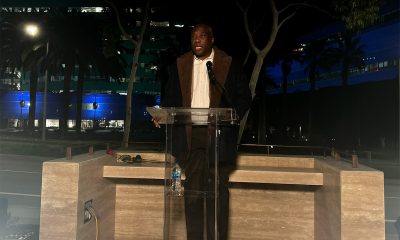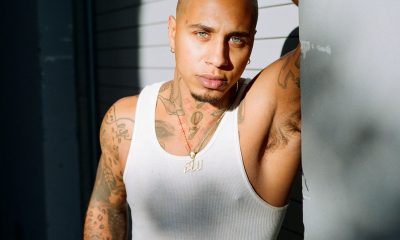Arts & Entertainment
Dances with Films Provide Much-Needed Representation of Queer Films at 28th Annual Festival
The 2025 outing of DWF will play a total of 254 films, with the theme “Find Your Truth,” making this is one of Los Angeles’ largest independent film festivals
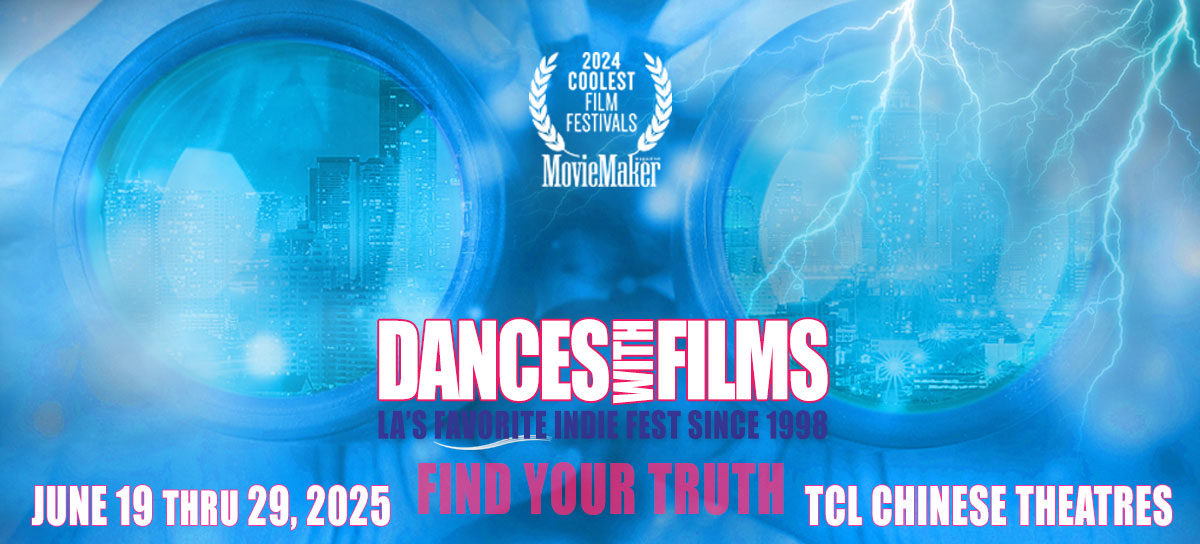
Jackie Tepper, Producing Partner and Documentary Programming Chair for the 28th annual Dances with Films Festival in Los Angeles, is thrilled to have an array of LGBTQIA+ movies and series at this year’s festival.
“We feel that it’s important for the LGBTQIA+ community to be heard, especially now given our political climate,” acknowledged Tepper. “We have always championed these projects, but even more so now. We are proud to shine a spotlight on these amazing films.”
This year, three features, eight shorts, and four pilots will play at the historic TCL Chinese Theatre from Thursday, June 19 through Sunday, June 29. The 2025 outing of DWF will play a total of 254 films, with the theme “Find Your Truth,” making it Los Angeles’ largest independent film festival. A complete list of films and events, the festival schedule, passes and tickets, and more are available online here.
The features slate begins with the World Premiere of Lane Michael Stanley’s “T” on Friday, June 20 at 7:15PM. Filmed over lead actor Mel Glickman’s real-life first year taking Testosterone, “T” is a fictionalized, never-before-seen journey of nuanced transmasculine discovery, authentically portraying the moving struggles and joys encountered in friendships, family, and romantic relationships.
“We are incredibly honored to present such a diverse queer slate each year, added DWF co-founder Michael Trent. “Pride Month is a time of celebration and visibility for the LGBTQIA+ community, and we are so proud to shine a spotlight on these exceptional filmmakers who use their voice and art to promote acceptance and understanding.”
One of the highlights of the festival is the queer comedy TV pilot, “Gasbag,” which had its World Premiere at Dances With Films NYC last December. It screens in Pilots Block 6, Saturday June 28 at 3:30PM.
“Gasbag is the epitome of the scrappy ‘can do’ spirit that Dances With Films celebrates,” said writer and producer Lynn Rosen. “I often write about subjects that mystify me as a way to understand them, and overtalkers like George Nordstrom, my lovable protagonist, fit that bill. So when Covid lockdown struck, I wrote Season 1 for a few theatre friends, including fabulous character actor and co-EP, Chad Kessler, as a way to stay connected and keep our spirits up. We shared this DIY inaugural season with friends as a way to spread the joy we felt making it. People loved George and his band of merry misfits so much we felt we had to make Season 2.”
One notable film in the feature documentary category is Chris Coats’ “FLAMINGO CAMP,” where a group of young queer and trans anarchists create a thriving safe space for themselves in the squatter town of Slab City, known as Flamingo Camp.
The shorts programming kicked off on Friday, June 20 at 4:45 PM in the Documentary Shorts Block 1 with DWF alumna Cheri Gaulke’s LA premiere of the documentary, “Old Girl In a Tutu: Susan Rennie Disrupts Art History,” in which feminist scholar Susan Rennie seizes her iPhone and sneaks her queer, octogenarian body into master works of art, disrupting the narrative of the male gaze.
Head of Narrative Short Film Programming Lindsey Smith-Sands loves the brief glimpse that short films give viewers into other people’s lives.
“One thread throughout the short films this year is finding your true self and LGBTQIA+ stories work well with those themes,” Smith-Sands noted. “The exciting shift is seeing how LGBTQIA+ characters are portrayed in many of these narratives as the confident, assured ones, whereas the other characters are still struggling with who they are.”
a&e features
Exploring a different side of Los Angeles influencer Javonte Rose
This author, advocate, and model discusses the hard journey that brought him where he is today.

While online followers will think many things when they first lay their eyes on Javonte Rose, there’s one word that will come to many of their minds: perfection.
This LA-based model and musician has spent the last few years occupying people’s timelines with a perfectly curated social media presence. It’s what led to his casting on hit queer web series like WowPresentsPlus’ Vanjie: 24 Hours of Love, where fans came to know him for his effortlessly suave confidence. Javonte’s brand is built on this form of pure queer excellence — but it definitely didn’t start that way. Because, despite what it may seem to his thousands of Instagram followers, Javonte’s life story is one of hardship and tireless work, facing some of the worst situations imaginable and refusing to let them break you. It’s an aspect of the influencer that your average follower wouldn’t get to learn about, and it’s an experience that he hopes to share with the many people going through the same turmoil he did today.
Initially, Javonte sat down with the Blade to discuss his part in OUTtv’s recent reality series Slayers: Wheel of Fate. Hosted by the legendary Tiffany ‘New York’ Pollard, Javonte was thrilled to be a part of this all-queer competition show. “I had an amazing time,” he gushed. “And just being in a house with so many different individuals who you don’t know and coming together…it brought me back to childhood. [I got] to be very smart and strategic — playing it cute and playing it safe!” He laughed about the intensity of this program, yet what began as a fun conversation about reality TV quickly became an insightful discussion about healing from trauma, all because of one question: what made you who you are today?
Of course, every influencer has a past, one that reveals a deeper side to the flawless image projected to their online audiences. But few backstories are as shocking as Javonte Rose’s, with the man starting his explanation with a distressing statement: “I’ve been on my own since I was 15 years old.”
“Growing up was such a struggle for me,” he continued. “[My siblings and I] were split up as kids, because my mom was going through a lot…she had her first kid at 13, and so she was trying to be a mom and a teenager at the same time. So we were all split up, and I moved in with my aunt — it was a big difference.” Javonte’s eyes literally lit up when speaking about his aunt; for the first time in his life, it felt like he actually had a parent. “My aunt was the one who taught me how to love and respect and appreciate people…she treated me with love and respect, and loyalty and guidance, and the motherhood my mom didn’t have [any of].” While he spent a relatively short time with the woman, Javonte emphasized how dearly he loves his aunt and the sense of family that she instilled in him. He’d finally received the love he hadn’t had from his birth mom, which is why it was particularly devastating when, after only a few years with his aunt, his mother regained custody of her children.
Returning to his immediate family set off a decade of torment for Javonte. “I was being bullied by kids in school, then going back home [and] being bullied by my siblings and verbally [abused] by my mom and her boyfriend.” This experience went on well into his teens, forcing him to start working at only 12 years old while enduring homophobic harassment at home and in school. These years of abuse culminated in the horrific experience of his mom calling the police on him when he was only 15 years old.
“Your mother putting you in jail for something you didn’t do is [heartbreaking],” said Javonte, detailing the day when, after attacking him physically when he tried to leave their home to go to work, his mother called the police and alleged that he was the one attacking her. “Feeling those handcuffs…knowing she’s behind you watching it happen…” The artist described the feeling of having the person meant to protect you turn into the source of your worst trauma. It was a terrifying moment that led to his younger self moving to Boston, where he began the modeling career that brought him to where most people know him today.
“People always [see me as] this beautiful man. ‘Wow, he does modeling, acting, he’s on television…how can he go through such struggles and trauma?” It’s a misconception that Javonte has always experienced, but it’s luckily given him a platform that he uses to hopefully make sure nobody goes through the same experience he did.
While many people know Javonte for his reality TV appearances and catchy songs, the man has also spent years as one of Los Angeles’ most fashionable activists. Not only has he documented his tumultuous childhood in a memoir, Behind the Blue Eyes, but in 2016, he started his own anti-bullying nonprofit, I’m Here. He was able to turn a lifetime of tragedy into a mission to support others with a ceaseless confidence that he credits to one person: his aunt. “I always stood my ground because my aunt always told me to keep my head high and smile no matter what. I just kept looking at myself in the mirror and [telling myself], ‘You are amazing, you are beautiful, you are strong, you are powerful.’”
Javonte’s story shows how even just one supportive person can impact someone’s entire life. And, through the man’s ability to turn so much early anguish into the easy image of perfection he has now, it also speaks to the importance of valuing yourself even when everyone around you tries to make you feel lesser. Because Javonte wouldn’t have accomplished any of his wildly impressive resume without believing that he had a story to tell. And, as he ended the interview, the advocate advised his many fans, “Find a safe place…and write. Write the things that you’re going through, things that you want to change, and things that you want to see in your life. Try to think of the beautiful life moments [you’ve had], and try to think of the beautiful life moments that [you will] have. And just try to keep uplifting yourself through it all.”
Tarot Readings and Astrology
December is a time for reflection, celebration, and tying up loose karmic threads in Intuitive Shana’s December tarot reading
The cards are encouraging us to look at the past and take note of the outside influences, both good and bad, that have shaped situations for us as well as shaping our behaviors and reactions.
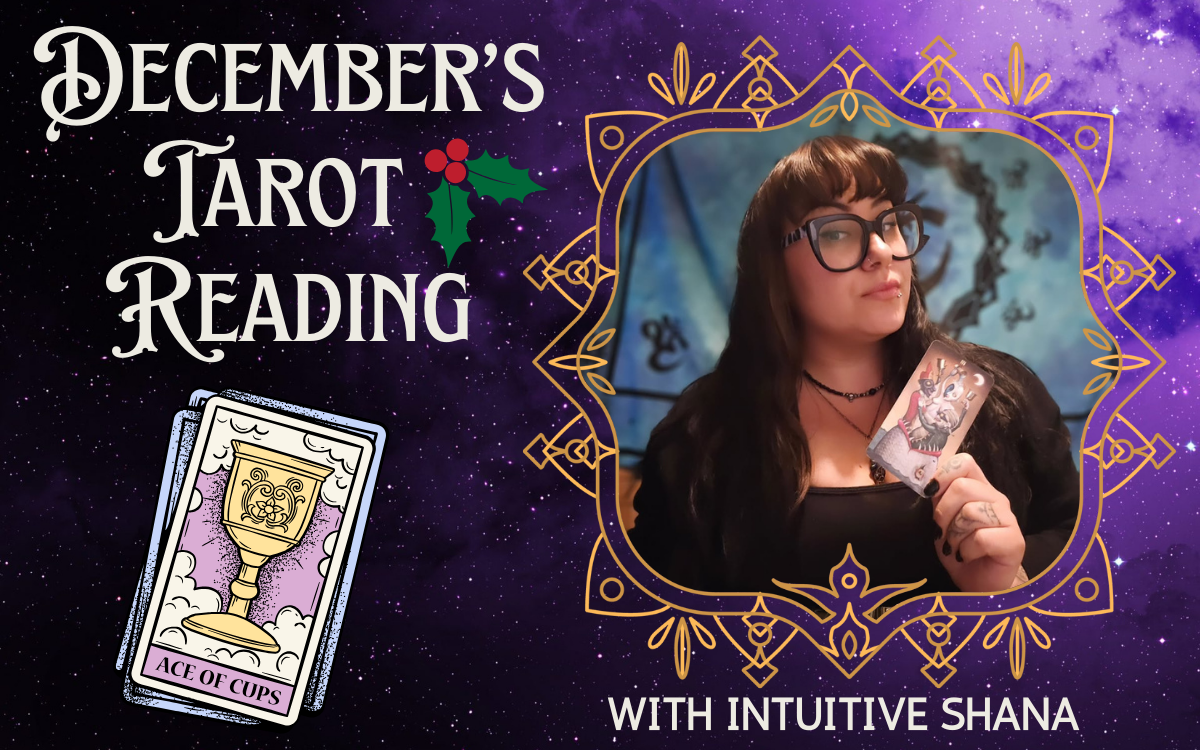
Happy holidays, my lovelies and my ho-ho-hos! December is here, we have approached the final month of the year, which means it’s time for reflection, celebration, and tying up loose karmic threads so that we can walk into 2026 with no strings attached. What does that look like? Let’s ask the tarot cards and find out.
With us wrapping up the year, we tend to set goals for the year ahead, but let’s make sure that we are looking at the year behind us and use the lessons and experiences from it to help shape our goals and plans accordingly. The cards are encouraging us to look at the past and take note of the outside influences, both good and bad, that have shaped situations for us as well as shaping our behaviors and reactions. Who got in your way? Who pushed you to be your best self? Pay close attention to where there was disharmony and discord, and ask yourself what you did in response to those situations. Did you stay put even though it wasn’t the best fit for you? If that’s the case, figure out why… there’s more to come with us being challenged with toxicity ahead, and we need to understand our motivations, and know when it is our ego talking instead of our authentic selves. Reflection often brings clarity and shines light on newfound wisdom. Do not deprive yourself of that this month.
December is reminding us to be creative with our expressions of love and celebration. Yes, it’s the season of giving, but that doesn’t necessarily mean giving gifts that break our bank. Engage with others through shared experience and stimulate each other’s minds and passions. I know that may sound cliché, but time spent with someone may amount to something monumental for them. I see that a lot of people will be struggling with depression and anxiety over this month, and having a safe space with friends may be the best ( and most genuine) gift they could receive. This year has challenged all of us on so many levels, putting aside the superficial holiday junk, and just simply showing up will pack more joy and meaning than anything that could be gift wrapped.
There is an air of ingenuity going around this month, and it is leaving a lot of folks inspired. We are feeling called to rebrand, refurnish, and rebirth ourselves. Start making these plans and decide how you will carry them out in the new year. Be mindful that this task may not be as easy as it sounds. Those of us who are sticking to this commitment may be surprised to find that the resources we thought we had are in fact not there. Not to worry, this doesn’t mean we are being left high and dry; it means that we will be finding ourselves having to start from within, and as we go along with the transformation, outside help will arrive. Like building a drag or burlesque costume on a budget, we often have to start with what is in our own closet as we develop our act.
With New Year’s on our heels, I thought now would be the perfect time to sprinkle some spell work in so that we can all embrace our inner magic. Lucky charms aren’t just the dyed rabbit’s foot we all had on a key chain as a child (p.s. If you had one as a kid, you’re probably a witch now.) In witchcraft, a lucky charm comes in a variety of shapes and sizes and is a token that we enchant to carry out a specific wish or simply bring us good luck.
You will need three things for this spell:
- An inconspicuous item that you will be enchanting. Like a piece of jewelry or a small token that can be carried in your pocket or wallet.
- Your intention. Decide what energy this charm will bring you. Will it bring you good luck? Make you a money magnet? Are you swimming in sex appeal? The options are endless, but choose one and get as specific as you can. Bonus points if you can think of a visual to go along with it. For example, whenever I do a money spell for myself, I always conjure an image of me rolling around in a mountain of cash.
- A New Year’s Eve party! It can be a huge bash or something more intimate; the key is that we have jovial and celebratory energy at midnight that we can use to enchant our charm.
Start by cleansing the item you have chosen to be your lucky charm by passing it through incense smoke. The smoke can be from an herbal bundle or a stick of incense. Tuck it away in your pocket and take it with you to the NYE party. Once the clock begins to count down to midnight, grab your item in your dominant hand and begin to think about your intention.
Imagine yourself carrying out the specific actions that correspond with this intention, or picture the visual we discussed earlier. Take this image from your mind and send it all to your charm. When the clock strikes midnight, hoist the charm in the air as you cheer out “Happy New Year” and allow it to capture all of the celebratory energy from the cheers and party around you. Slip the charm back into your pocket and know that you have created a totem of luck and happiness to carry with you throughout the year.
Shana is an initiated priestess, paranormal investigator, author, and host of the podcast Queer from the Other Side. Follow Shana on IG.
a&e features
Jonathan Bennett: making ‘Finding Mr. Christmas’ Season 2 with heart, and telling gay love stories for broad audiences
The Mean Girls star dishes on looking for the next Broadway role and how Hallmark has supported queer storytelling
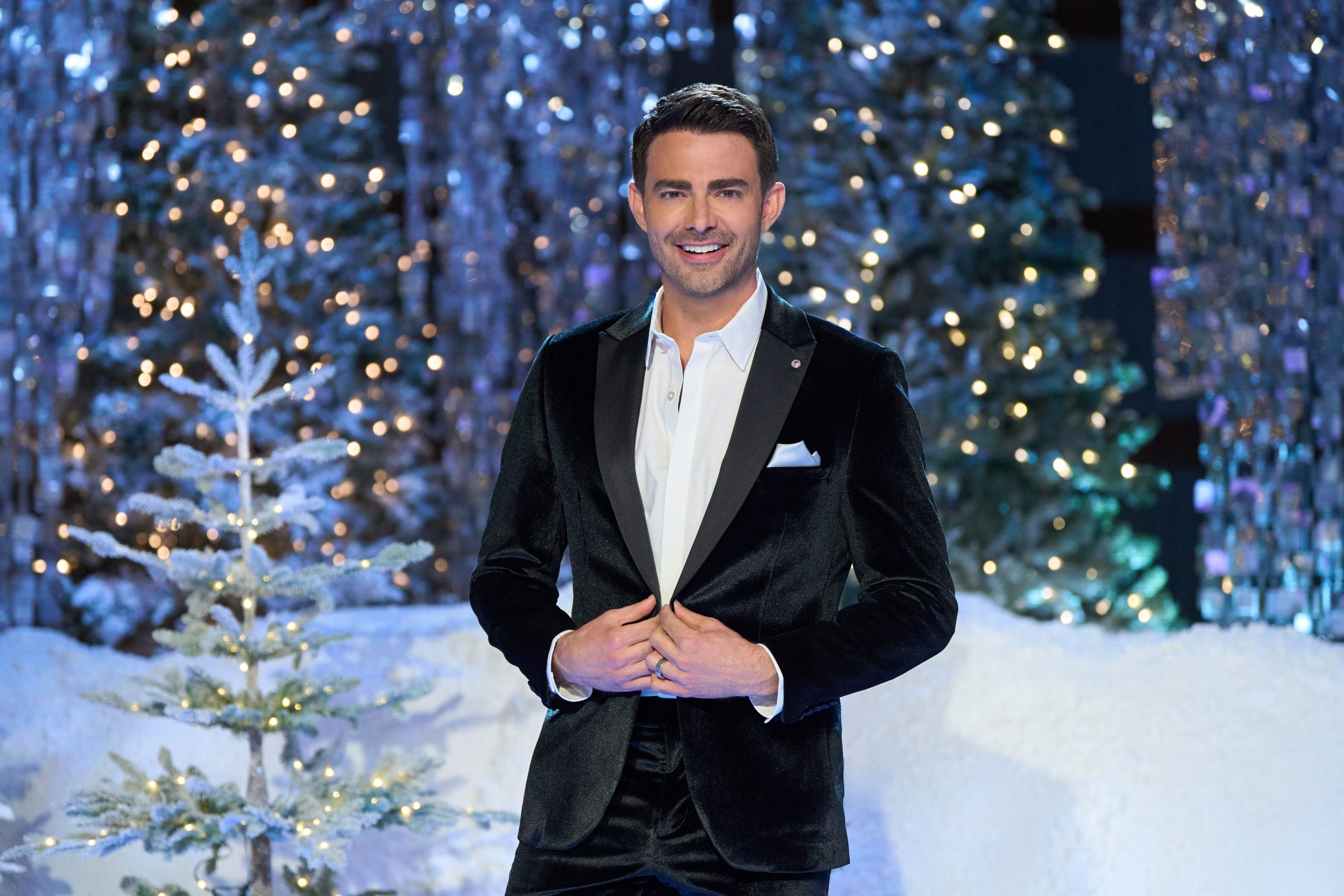
Jonathan Bennett believes there are two kinds of people in the world — those who love Hallmark movies and liars. And in Season 2 of Finding Mr. Christmas, which the Mean Girls star co-created with Ben Roy, Bennett is searching for Hallmark’s next leading man.
“It’s so fun for people because everyone in their life has someone they know that they think should be in Hallmark movies, right? The UPS driver, the barista at the coffee shop, the dentist,” Bennett says. “So we’re testing their acting abilities, we’re testing who they are, but we’re also looking for that star quality — the thing that makes them shine above everyone else. It’s almost something you can’t explain, but we know it when we see it.”
Season 2’s cast includes a former NFL player for the Green Bay Packers, a few actors, and a realtor. The 10 men compete in weekly festive-themed acting challenges, one of which included having to ride a horse and act out a scene with Alison Sweeney. The contestants were chosen from a crop of 360 potential men, and Bennett gives kudos to the show’s Emmy-nominated casting director, Lindsay Liles (The Bachelor, Bachelor in Paradise).
“She has a tough job because she has to find 10 guys that are going to be good reality television, but also have the talent to act, carry a scene, and lead a Hallmark movie eventually,” he says. To be the right fit for a Hallmark leading man, Bennett singles out five key characteristics: you have to be funny, charming, kind, have a sense of humor, and you have to do it all with a big heart.
Of course, Finding Mr. Christmas wouldn’t be Finding Mr. Christmas without its signature eye candy — something Bennett describes as “part of the job” for the contestants. “I can’t believe Hallmark let me get away with this. I dressed them as sexy reindeer and put them in harnesses attached to a cable 30 feet in the air, and they had to do a sexy reindeer photo shoot challenge,” he says with a laugh. “This season is just bigger and bolder than last. People are responding to not only all the craziness that we put them through, but also comparing and contrasting the guys in their acting scenes when we do them back-to-back.”
Season 1 winner Ezra Moreland’s career has been an early testament to the show’s success at finding rising talent. On seeing the show’s first winner flourish, Bennett says, “Now to watch him out in the world, just booking commercial after commercial and shining as an actor and a model, I think the show gave him the wings to do that. He learned so much about himself, and he took all that into his future auditions and casting. He just works nonstop. I’ve never seen an actor book more commercials and modeling gigs in my life.”
Bennett has been a star of plenty of Hallmark movies himself, including the GLAAD-award-winning The Groomsmen: Second Chances, which makes him a fitting host. Among those movies are 2020’s Christmas House, which featured the first same-sex kiss on the network and had a major impact on Bennett’s career as an openly gay man. “Hallmark’s been so great about supporting me in queer storytelling. But again, I don’t make gay movies for gay audiences. I make gay love stories for a broad audience, and that’s a huge difference, right? We’re not telling stories inside baseball that only the gay community will understand.”
He continues, “The backdrop of a Hallmark Christmas movie is very familiar to these people who watch. And so when you tell a gay love story, and you tell it no differently than a straight love story in that space, they’re able to understand. It’s able to change hearts and minds for people who might not have it in their lives.”
While Hallmark has become a major staple of Bennett’s career, he started off wanting to be a Broadway actor. And before the first season of Finding Mr. Christmas aired, Bennett took a break from TV to make his Broadway debut in Spamalot, replacing Michael Urie as Sir Robin and starring alongside Ethan Slater and Alex Brightman.
“That was my dream since I was five years old – then I booked a movie called Mean Girls, and everything kind of changes in your life. You no longer become a person pursuing Broadway, you become a part of pop culture,” Bennett recalls. “And to be honest, when I hit 40, I was like, ‘I’m probably never going to get to live that dream.’ And that’s okay, because I got to do other dreams and other things that were just as cool but different. So I honestly never thought it would happen.”
Bennett is still determined to make his way back on Broadway with the right role — he calls Spamalot the “best experience” of his life, after all — but he’s got another Hallmark show lined up with Murder Mystery House, which he co-created. The show was recently greenlit for development and intends to bring the Hallmark mystery movie to life. “It’s kind of like our version of The Traitors,” Bennett admits.
Looking back on both seasons, Bennett says that what makes Finding Mr. Christmas stand out in the overcrowded reality TV landscape is that everyone involved makes it with heart: “This isn’t a show where you’re going to watch people throw drinks in each other’s faces and get into big fights. The thing that has amazed me so much about this show, the more we’ve done it, is that every season, 10 guys come in as competitors, but they leave as a family and as brothers. That’s something you don’t get on any other network.”
Finding Mr. Christmas airs every Monday on Hallmark through December 20, with episodes available to stream on Hallmark+.
a&e features
Nia DaCosta and Tessa Thompson on the vital queer chaos of ‘Hedda’
The director and star of the sapphic thriller offer a new vision for what LGBTQ+ representation can be
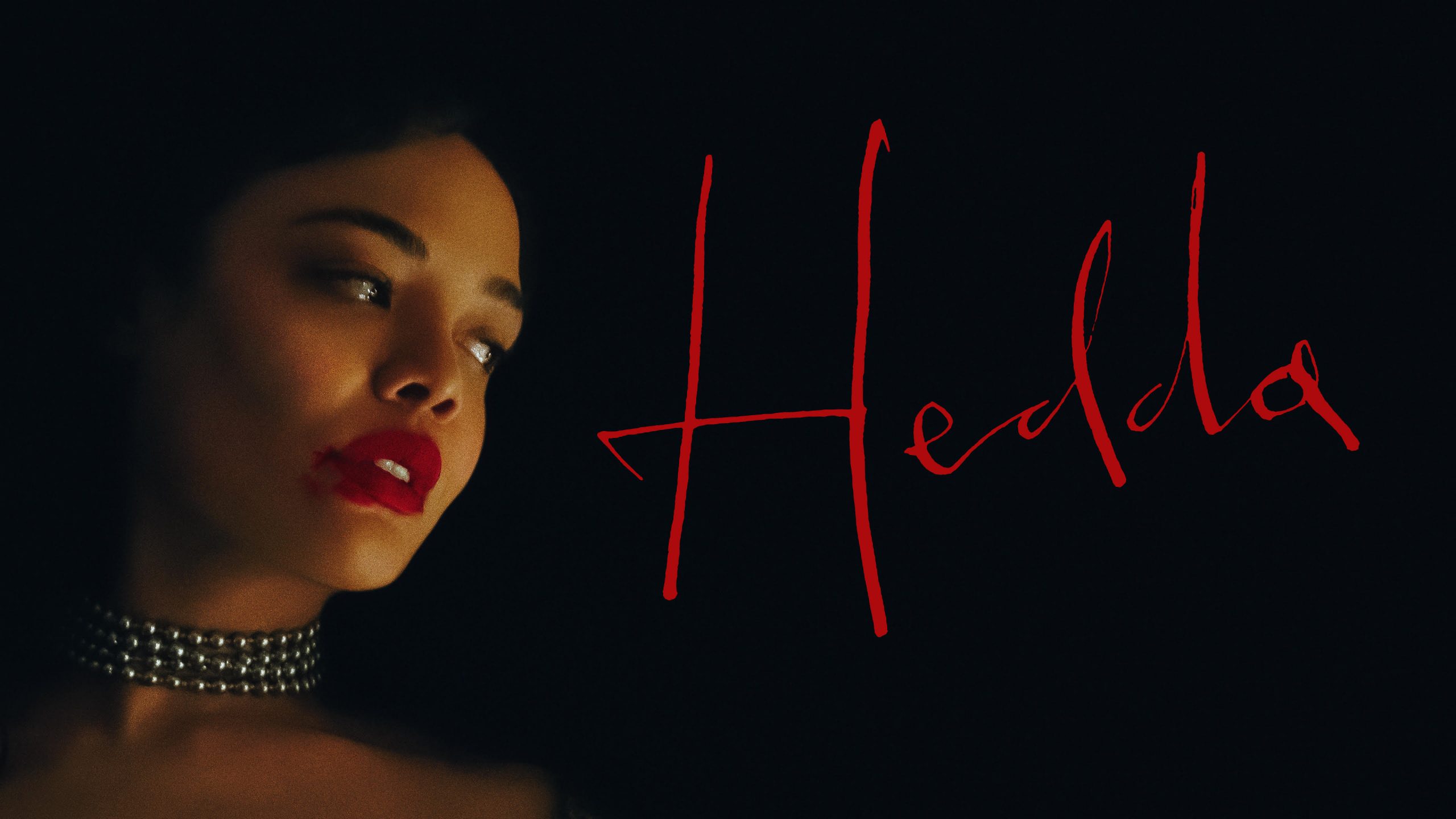
No matter how much hateful rhetoric tries to silence LGBTQ+ communities, queer people will always fight tirelessly to ensure our stories are told. This is shown prominently in film and television; modern viewers are lucky to have an ample library of queer media to choose from. That’s not to say there haven’t been serious losses in this area, with organizations like GLAAD documenting how the rise in hateful rhetoric has exacerbated existing attempts to ban these important pieces of media. But whether it be in the cinema or online, marginalized creators continue pushing to have their projects be created today — and absolutely none of these creations are as deliciously diabolical as Hedda.
An adaptation of Henrik Ibsen’s classic play, this story follows the titular housewife as she deftly manipulates anyone unfortunate enough to get caught in her orbit. Taking place over the course of a raucous house party, the 2025 version of this 1891 tale sees our ‘protagonist’ square off against 1800s gender norms, her inept husband, and the sudden re-emergence of her ex-girlfriend. Along with its jaw-dropping story of betrayal and intrigue, this complex adaptation seamlessly weaves various identities into a narrative that has been celebrated for more than 100 years. It effortlessly intertwines these historic themes with aspects of queerness and racism that audiences will know well, not only creating the best Hedda adaptation yet, but innovating what LGBTQ+ representation can look like today.
As someone renowned for injecting legendary franchises with much-needed nuance, Nia DaCosta knew how important it was to bring representation to Hedda — despite many people advising her against it. “[Speaking] as a Black woman, when you are not a white dude, your identity becomes a ‘complication,’” said the director, when discussing with the Blade what pushed her to translate this typically white, heterosexual character into a queer woman of color. “Something I get asked a lot is, ‘Oh, well Hedda is Black and queer — don’t you feel like that’s stacking too much on top of the film?’ And I respond, ‘Who you are is not too much.’”
It’s a sentiment that the film’s star, Tessa Thompson, completely resonated with. She shared with the Blade, “I think there is something so powerful about queerness [becoming] textural inside of a narrative,” raved the star, whose filmography is filled with projects like Dear White People and Passing that interrogate what true representation looks like in modern society. “Where we get to sort of normalize that and say this is a huge part of our identity, but it isn’t everything about us,” she continued. “Frankly, I wish that more filmmakers thought about that when they’re conceiving characters.”
It’s a conversation that has gone on for years among queer cinephiles: what is representation by and for LGBTQ+ audiences, and what is teaching non-queer viewers that gay people are also human beings? While it is (unfortunately) still essential for movies to perform this kind of education, it’s led to many projects offering a digestible image of queerness that doesn’t actually reflect the experiences of queer people watching. This kind of portrayal has led to studios utilizing diverse identities as gimmicks, ‘complications’ in the narrative that must be maneuvered around rather than vital aspects of nuanced characters. It’s a harmful trend of hollow representation, and it’s one that Hedda combats in every single scene.
“[Hedda is] canonical material that’s been celebrated for centuries,” Thompson explained. “Obviously, that wasn’t from a queer perspective, wasn’t from the perspective of folks of color…and I think, in a way, what we’re trying to say is that our stories also should be canonical.” By using a story that has existed for so long and effortlessly imbuing themes of queerness and racism into it, this creative team showcased how identity doesn’t have to simply be a narrative ‘hook.’ Rather, by recognizing that these significant identities contribute to the larger personality of a character, it adds impressive complexity to make the story even more entertaining to watch. Thompson’s character is a devilish (if not outright evil) anti-hero who champions her intersectional identities while not performatively explaining to audiences the anguish of being a queer Black woman in the 1800s. This allows her many intricacies to truly shine, with the film refusing to reduce Hedda to the discriminations these identities could solicit and instead using them to further flesh out an already intoxicating character.
Nia DaCosta is an expert at weaving diverse identities into stories not specifically focused on those identities (often to the outcry of conservative audiences). “You can’t think of identity as a complication,” she said, detailing how, whether it was Hedda or her foray into superhero cinema with The Marvels, she’s been alarmed at how reluctant so many filmmakers are to center marginalized identities in stories that aren’t about marginalized pain. “Don’t let anyone else tell you that it’s a complication or that it’s gonna make it too confusing or too complex. It’s not true, because we’re all valid, and we all deserve to be at the center of a story.”
By showing not only how easily such a classic tale can be revised with diverse themes but also how greatly improved it can be by them, DaCosta highlights how easily true representation can be accomplished today. Representation that doesn’t tokenize queer individuals or refuse to allow them outside of stories focused on the pains of being queer. Through her ideation and Thompson’s acting, she innovates cinema by offering a truly multi-dimensional portrayal of a queer person of color whose identity isn’t a complication or narrative tactic. And, when asked what she hopes for intersectional stories like this going forward, the Director ended the interview by saying plainly, “I want to see more of them.”
“There’s room for us in every kind of genre, every kind of storytelling. And we’re slowly cranking in that direction, but I think it’s a fight we have to keep having, and we have to keep being forceful about it, and we have to keep showing up in these spaces and planting our feet. That’s what I hope to see more people [doing]…coming in and planting their feet.”
a&e features
Jason Caceres is the rising talent you can’t look away from – not that you’d want to
With three OUTtv series, festival awards, and charismatic energy, Caceres is becoming one of queer media’s most versatile characters
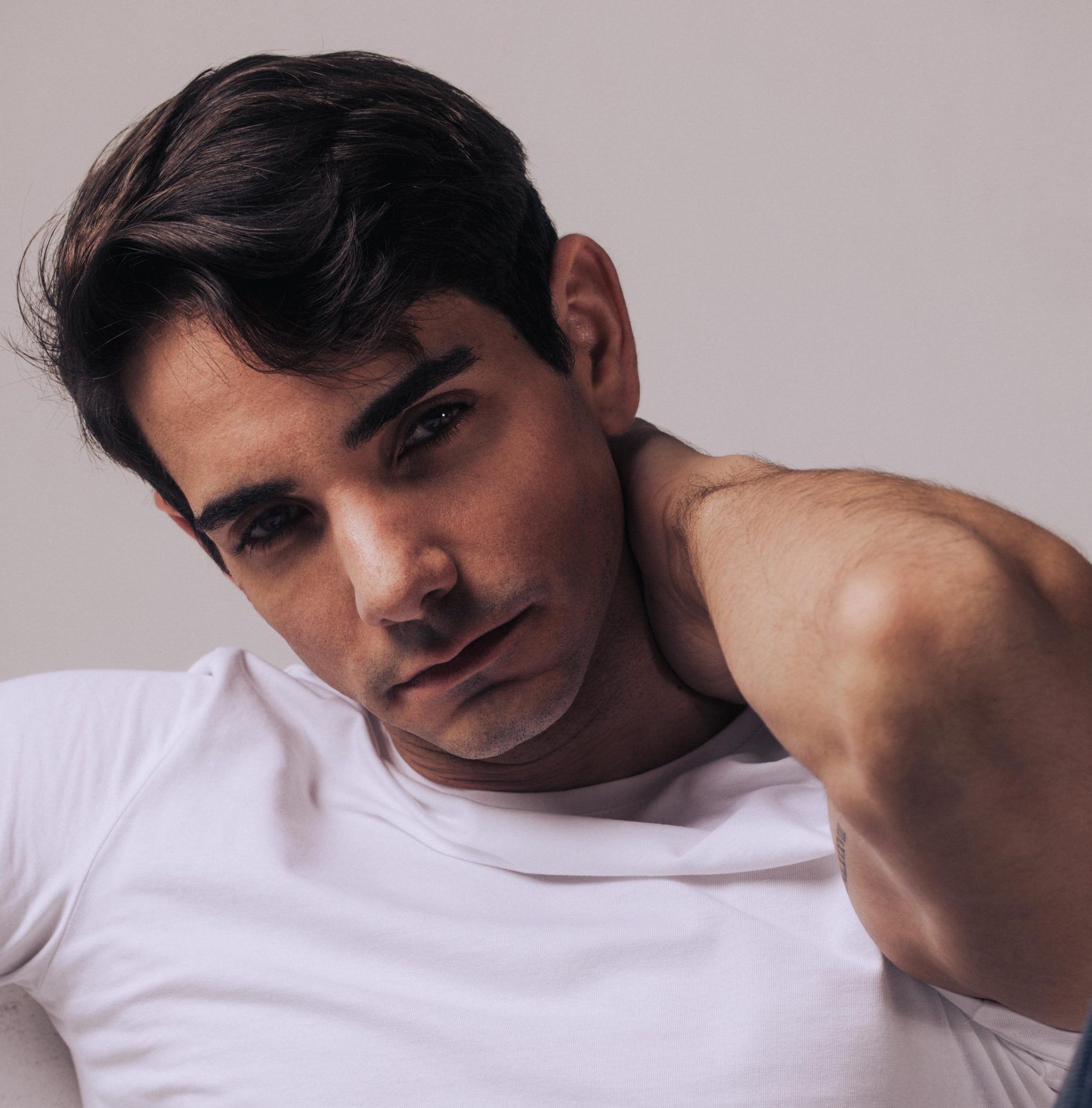
For actor Jason Caceres, the past few years have marked an intentional rise – one defined by a commitment to queer storytelling, a love of comedy, and a layered understanding of what representation in media means. With roles across multiple OUTtv series, including Boy Culture: Generation X, Open To It, and the upcoming Laid Bare, Caceres has become one of the network’s most recognizable and versatile emerging voices. He’s the kind of actor who can get a laugh with nothing more than an eye-roll, a perfectly timed one-liner, or a hair color choice that probably deserves its own content advisory.
Born and raised in Miami to Cuban immigrant parents, Caceres grew up straddling two cultural worlds. This duality informs the emotional sensitivity he brings to his characters. “At home, I spoke Spanish, watched Telenovelas, ate croquettas and bocaditos,” he explains. “At school, I spoke English and ate mashed potatoes and mac and cheese. It helped broaden my horizons…”
To have grown up at this intersection, he says, is precisely what allows him to tap into a range of emotional registers on screen. “It’s given me a sense of empathy that I’m not sure I would’ve had otherwise.” That empathy is evident across his work, whether he’s leaning into camp absurdity or finding solitude in the quieter, more vulnerable scenes.
Caceres’s visibility extends well beyond television. He’s quickly becoming a fixture on the festival circuit, most notably at Cinema Diverse, the Palm Springs LGBTQ+ Film Festival, where he appeared in five programs this past year – an impressive feat even for longtime regulars. “As an openly queer artist, it’s always heartwarming to be received so well by my own community,” he tells the Blade. His long-standing relationship with the festival reflects not only local enthusiasm but also the deep resonance of his work with queer audiences seeking media that affirms their personal experiences and stories.
Still, it’s his turn as Princeton Martinez on Open To It that has captured the widest attention. Caceres’s portrayal is sassy and chaotic, yet he still manages to pull the character into unexpectedly vulnerable territory – a balance he intentionally cultivated when returning for Season 2. “Princeton has seen a lot of growth since the first season,” he says. “Season 2 sees Princeton struggle to grow into himself. We see heartbreak, we see insecurity, we see doubt, and we see love.”
One of the season’s most striking moments mirrored a moment from Caceres’s own life. “[Princeton’s] letting his guard down and, for the first time probably in his entire life, admits that he wants someone to love him the way Greg and Cam love each other,” Caceres recalls. The emotional truth of the scene surprised even him. “It struck me in a way I was not expecting … Right as Frank yelled ‘cut!’ I started bawling like crazy. It was definitely an ‘art imitates life’ moment for me.”
Yet the versatility of Caceres is what truly defines both him and his growing career. As he tells the Blade, “At the end of the day, [Open To It] is a sex comedy that is meant to make you giggle.” He talks about the show with a mix of humor and self-awareness, fully conscious of the role he plays and the space the series occupies in queer culture. At the same time, he remains humble and genuinely grateful for his opportunities. He is quick to credit the queer creators who shaped his own awakening, including Boy Culture and director Allan Brocka. Now, with three OUTtv series to his name and Laid Bare, a queer Agatha Christie-style murder mystery, on the horizon, Caceres has become part of that creative lineage himself. “When I moved to Los Angeles to pursue acting, I knew I wanted to lend my voice to the LGBTQ+ community,” he says. “I was starving for stories and characters that were like me.”
What unites his varied roles is a throughline of joy – a willingness to portray queer characters as messy, hilarious, emotional, desired, and flawed. Caceres is bold, sexy, eclectic, and entirely his own. He is a rising talent whose presence signals exactly where queer storytelling is headed next.
Movies
Even Ariana Grande and Cynthia Erivo can’t save the fractured and messy ‘Wicked: For Good’: Film Review
Jonathan Bailey’s return as Fiyero is a highlight, but this sequel is a major step down from the first film
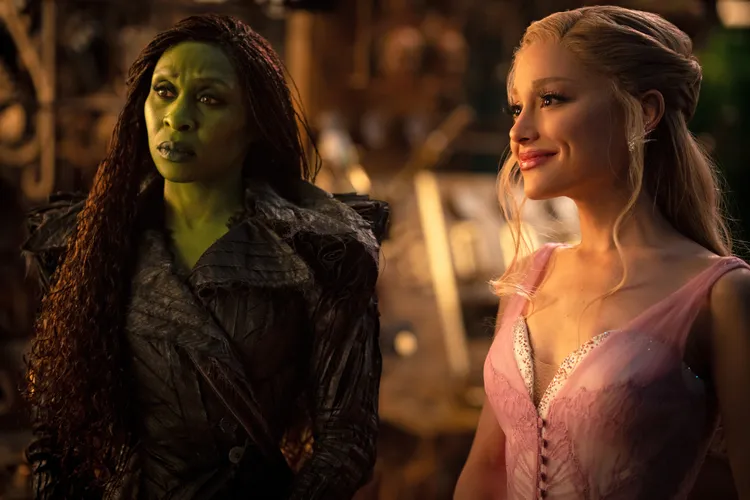
In the first part of Jon M. Chu’s grand screen adaptation of the beloved Broadway hit Wicked, it was Ariana Grande and Cynthia Erivo’s performances that not only grounded the story and its stakes but also expanded the center of the film through their deep exploration of female friendship and love.
The consequences of splitting this story into two parts, and the bloated fan-service that comes this side of The Wizard of Oz and the yellow brick road (more on that later), are detrimental to this sequel, leaving Grande and Erivo to do everything they can to save this film. And try as they might with powerhouse vocals and their fully lived-in chemistry, even these two Oscar-nominated artists find themselves lost in the mix within Wicked: For Good.
This sequel kicks off where Wicked left off, with Glinda now assuming her public-facing role as Glinda the Good (Grande), marrying Prince Fiyero (Jonathan Bailey), and Elphaba (Erivo) hiding away in fear, fighting to survive as everyone in Oz wants her burned alive, as orchestrated by Madame Morrible’s (Michelle Yeoh) vicious propaganda. The film introduces two new numbers, including the pretty forgettable No Place Like Home and Glinda’s fitting solo The Girl in the Bubble, but otherwise sticks fairly close to the source material. Considering that the second act of the musical has always been considered more divisive, perhaps that wasn’t such a good idea.
If there’s one element of For Good that is stronger than the original, it’s Bailey’s performance as Fiyero, who, dare I say, actually has a nuanced and complicated arc! Erivo and Grande, as previously mentioned, are excellent, returning with their unmatched friendship. Grande, in particular, gets an expanded arc this time around, one that allows her to play naive while also tapping into a rare dark side. It’s a fine line she has to play in every moment between Glinda’s outward persona and her true affection for Elphaba. If Erivo ran away with the first movie with Defying Gravity, then Grande has the true staying power of this sequel. However, Bailey, Erivo and Grande alone can’t make this film overcome its deep structural issues.
One of the central problems with the screenplay here is that almost every scene feels like an interstitial moment, where character tensions are being teased, and we’re told (told is the key thread throughout this film) that the stakes are increasing. For instance, the scene when the animals in Oz are being exiled from their home, as we get in pretty much the only moment the animals are actually shown, makes it clear that the only goal with their inclusion is to manipulate the audience into feeling sad. Alternatively, take the first moment Elphaba comes to visit Glinda in secret, which, in part, is supposed to illustrate how in danger Elphaba truly is. Because so much of the Oz action happens offscreen, though, the film never makes us feel just how in danger Elphaba is aside from one moment in the forest.
The issue is that there’s not much we actually get to see of the material consequences here, either from the conflict introduced in the first film or new problems established here. Never do we see how the animals are coping with being forced off their land, nor do we understand how Elphaba, assuming the role of the Wicked Witch of the West and starting to feel like maybe she is, in fact, a monster, actually affects the people of Oz. The action that happens around the characters, and the consequences of Elphaba and Glinda’s decisions, feel completely thwarted. And as the film’s aesthetic turns grey and muddy in the third act, it’s hard to even enjoy what we’re looking at despite the brilliant work of costume designer Paul Tazewell and production designer Nathan Crowley, who properly pay homage to classic MGM musicals in some practically impressive moments.
Elphaba embraces the role of the Wicked Witch of the West, and Glinda finds herself overcome by emotion in a plot point relating to Elphaba’s sister, Nessarose (Marissa Bode), but the structure of the story makes it difficult to know where character motivations actually lie with such an inconsistent tone. Character beats aren’t given time to fully breathe, like with Elphaba and Fiyero’s blossoming romance; As Long as You’re Mine is a great showcase for these two vocalists, but the script doesn’t seem keen on building or developing their relationship any further beyond that.
It’s almost as if Chu and the writers were too afraid to let these characters leading a multi-million dollar four-quadrant epic make messy, sometimes horrible decisions, so when it’s time for Elphaba and Glinda’s climactic duet For Good, there’s not nearly as much catharsis in watching Grande and Erivo’s heartbreaking performances as there should be. And with a 137-minute runtime, there was plenty of time here to explore the messier facets of these characters.
What Chu dedicates more screentime to is The Wizard of Oz tie-ins. And yes, Victor Fleming’s 1939 classic is essential to this story, and maybe there was no way of getting around the Dorothy of it all. But it’s undeniably awkward to watch transitional scenes (scenes is too strong a word here) where Dorothy, the Scarecrow, the Tin Man and the Cowardly Lion move from place to place simply for the sake of tying loose threads together. Because it has to connect to The Wizard of Oz, of course! But is there any entertainment value the audience gets, or stakes present within these moments other than reminding the audience of what greatness they could be watching instead? It doesn’t help that these moments are inconsistent in how they’re filmed, too, and the wide shots of them traveling on the yellow brick road feel like the audience is in CGI land.
With all that in mind, and considering where this sequel falls short, it’s important to remember that Wicked has found its thematic power ever since the original 1995 novel by Gregory Maguire in exploring propaganda and the influence our leaders have on how the public perceives — and often fears — the wrong people. But in For Good, it’s all just too on-the-nose and directly stated to the audience. A more interesting exploration of these ideas might’ve tried to place the audience in a position where we can emotionally understand how easily people can be manipulated and made to fear the people actually trying to save them — certainly a relevant theme to touch on in the times we’re living in.
One moment where the film actually does seem to attempt that is in another brief fakeout with Jeff Goldblum’s Wizard character, and the plan he gets Elphaba and Glinda to agree on before Glinda and Fiyero’s wedding. Unfortunately, this choice is entirely confusing because the audience is already conditioned not to trust a word the Wizard says after the end of the first Wicked. Goldblum has a charming and well-suited number, Wonderful, where he charmingly sings about deception, but it’s clear the film just doesn’t know what to do with the Wizard this time around.
As the film’s opening weekend box office records and audience scores have already indicated, the most die-hard Wicked fans will certainly find something good in For Good. What should be celebrated about this film, in spite of its faults, is the work of the countless artisans who brought Oz to life with practical effects. Glinda’s apartment, in particular, creates a perfect image of the curated bubble she lives in — beautiful yet solitary. But the hard work of Wicked’s brilliant artisans can easily get lost, especially when the film leans heavily into CGI and shots going for “realism.” With its unsatisfying tie-ins to The Wizard of Oz and fractured structure, For Good leaves much to be desired when Grande and Erivo aren’t creating priceless movie magic on screen together.
Movies
Theater classic gets sapphic twist in provocative ‘Hedda’
A Black, queer portrayal of thwarted female empowerment
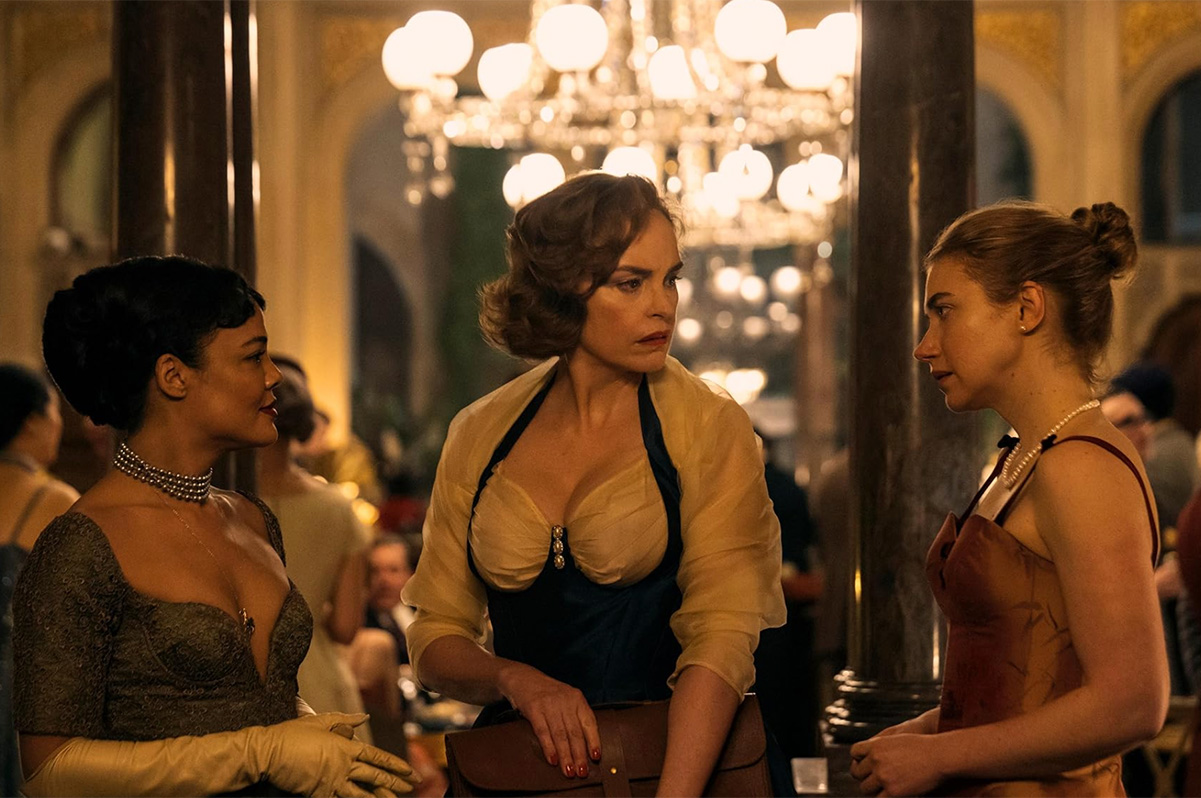
It’s not strictly necessary to know anything about Henrik Ibsen when you watch “Hedda” – the festival-acclaimed period drama from filmmaker Nia DaCosta, now streaming on Amazon Prime Video after a brief theatrical release in October – but it might help.
One of three playwrights – alongside Anton Chekhov and August Strindberg – widely cited as “fathers of “modern theater,” the Norwegian Ibsen was sharply influenced by the then-revolutionary science of of psychology. His works were driven by human motivations rather than the workings of fate, and while some of the theories that inspired them may now be outdated, the complexity of his character-driven dramas can be newly interpreted through any lens – which is why he is second only to Shakespeare as the most-frequently performed dramatist in the world.
Arguably his most renowned play, “Hedda Gabler” provides the basis for DaCosta’s movie. The tale of a young newlywed – the daughter of a prominent general, accustomed to a life of luxury and pleasure – who feels trapped as the newly wedded wife of George Tesman, a respected-but-financially-insecure academic, and stirs chaos in an attempt to secure a future she doesn’t really want. Groundbreaking when it premiered in 1891, it became one of the classic “standards” of modern theater, with its title role coveted and famously interpreted by a long list of the 20th century’s greatest female actors – and yes, it’s been adapted for the screen multiple times.
The latest version – DaCosta’s radically reimagined reframing, which moves the drama’s setting from late-19th-century Scandinavia to England of the 1950s – keeps all of the pent-up frustration of its title character, a being of exceptional intelligence and unconventional morality, but adds a few extra layers of repressed “otherness” that give the Ibsen classic a fresh twist for audiences experiencing it more than a century later.
Casting Black, openly queer performer Tessa Thompson in the iconic title role, DaCosta’s film needs go no further to introduce new levels of relevance to a character that is regarded as one of the theater’s most searing portrayals of thwarted female empowerment – but by flipping the gender of another important character, a former lover who is now the chief competition for a job that George (Tom Bateman) is counting on obtaining, it does so anyway.
Instead of the play’s Eilert Lövborg, George’s former colleague and current competition for lucrative employment, “Hedda” gives us Eileen (Nina Hoss), instead, who carries a deep and still potent sexual history – underscored to an almost comical level by the ostentationally buxom boldness of her costume design – which presents a lot of options for exploitation in Hedda’s quest for self-preservation; these are even further expanded by the presence of Thea (Imogen Poots), another of Hedda’s former flings who has now become enmeshed with Eileen, placing a volatile sapphic triangle in the middle of an already delicate situation.
Finally, compounding the urgency of the story’s precarious social politics, DaCosta compresses the play’s action into a single evening, the night of Hedda and George’s homecoming party – in the new and expensive country house they cannot afford – as they return from their honeymoon. There, surrounded by and immersed in an environment where bourgeois convention and amoral debauchery exist in a precarious but socially-sanctioned balance, Hedda plots a course which may ultimately be more about exacting revenge on the circumstances of a life that has made her a prisoner as it is about protecting her husband’s professional prospects.
Sumptuously realized into a glowing and nostalgic pageant of bad behavior in the upper-middle-class, “Hedda” scores big by abandoning Ibsen’s original 19th-century setting in favor for a more recognizably modern milieu in which “color-blind” casting and the queering of key relationships feel less implausible than they might in a more faithful rendering. Thompson’s searingly nihilistic performance – her Hedda is no dutiful social climber trying to preserve a comfortable life, but an actively rebellious presence sowing karmic retribution in a culture of hypocrisy, avarice, and misogyny – recasts this proto-feminist character in such a way that her willingness to burn down the world feels not only authentic, but inevitable. Tired of being told she must comply and cooperate, she instead sets out to settle scores and shift the balance of power in her favor, and if her tactics are ruthless and seemingly devoid of feminine compassion, it’s only because any such sentimentality has long been eliminated from her worldview. Valued for her proximity to power and status rather than her actual possession of those qualities, in DaCosta’s vision of her story she seems to willingly deploy her position as a means to rebel against a status quo that keeps her forever restricted from the self-realized autonomy she might otherwise deserve, and thanks to the tantalizingly cold fire Thompson brings to the role, we are hard-pressed not to root for her, even when her tactics feel unnecessarily cruel.
As for the imposition of queerness effected by making Eilert into Eileen, or the additional layers of implication inevitably created by this Hedda’s Blackness, these elements serve to underscore a theme that lies at the heart of Ibsen’s play, in which the only path to prosperity and social acceptance lies in strict conformity to social norms; while Hedda’s race and unapologetic bisexuality feel largely accepted in the private environment of a party among friends, we cannot help but recognize them as impediments to surviving and thriving in the society within which she is constrained, and it makes the slow-bubbling desperation of her destructive character arc into a tragedy with a personal ring for anyone who has ever felt like an outsider in their own inner circle, simply by virtue of who they are.
Does it add anything of value to Ibsen’s iconic work? Perhaps not, though the material is certainly rendered more expansive in scope and implication by the inclusion of race and sexuality to the already-stacked deck of class hierarchy that lies at the heart of the play; there are times when these elements feel like an imposition, a “what-if?” alternate narrative that doesn’t quite gel with the world it portrays and ultimately seems irrelevant in the way it all plays out – though DaCosta’s ending does offer a sliver of redemptive hope that Ibsen denies his Hedda. Still, her retooling of this seminal masterwork does not diminish its greatness, and it allows for a much-needed spirit of inclusion which deepens its message for a diverse modern audience.
Anchored by Thompson’s ferocious performance, and the electricity she shares with co-star Hoss, “Hedda” makes for a smart, solid, and provocative riff on a classic cornerstone of modern dramatic storytelling; enriched by a sumptuous scenic design and rich cinematography by Sean Bobbitt, it may occasionally feel more like a Shonda Rhimes-produced tale of sensationalized scandal and “mean-girl” melodrama, but in the end, it delivers a powerful echo of Ibsen’s classic that expands to accommodate a whole century’s worth of additional yearning.
Besides, how often do we get to see a story of blatant lesbian attraction played out with such eager abandon in a relatively mainstream movie? Answer: not often enough, and that’s plenty reason for us to embrace this queered-up reinvention of a classic with open arms.
a&e features
‘Suffs’ star Gwynne Wood wants us to continue to find hope
What a musical about the suffragette movement can teach us about fighting for LGBTQ Rights
Saying there’s a lot of anxiety in the queer community right now is an understatement. With the overwhelming shadow of politicians threatening to take away our rights, it is now more important than ever to try to find hope and not let fear control us. That’s what Suffs the musical aims to teach us how to do.
Gwynne Wood, who plays Lucy Burns, the co-founder of the National Women’s Party, sat down with the Blade to share what she’s learned from being in the musical.
“Lucy never conforms to what other people want her to be. She has this sense of humor that she uses to bring the group together, even in times of intense hardship. I think that playing her, like I would like to be, like that. I always want to bring humor and heart to these times that we’re living in.”
The suffragettes went through an instrumental amount of tribulation to get the right to vote, including going on a hunger strike and being called insane. Yet, they were still able to remain unwavering in their mission to get the 19th Amendment passed.
Even though there has been progress made since then, in many ways, we’re still fighting for our basic rights to be respected. Many states are trying to prevent LGBTQ people from being visible in classrooms through implementing book bans or just outright telling teachers they’ll be fired if they bring up LGBTQ people.
Even though the Supreme Court decided that it was not going to take up the Kim Davis case, which would have upended gay marriage, it felt disheartening to many that it was even a debate in the first place.
However, if there is one thing that Suffragettes can teach us, it is that we have the right to push back against these policies.
“As much as this administration wants to squash what feels like any sense of hope that we have. It’s our right to dissent. Things have been terrible before, but they pushed through. Our ancestors have done so much for us, and it’s our duty to them to fight back. “
Gwynne also felt the uncertainty around the Kim Davis case, as they recently got engaged. Despite that unease, they believe it’s essential to remember that fear should not prevent people from living their lives.
“We weren’t sure what was going to happen, but I think that I want people to know that even as we were getting inundated with scary things coming from our government, it shouldn’t stop us from living our lives to the fullest, and I think that Suffs has helped me to fully embrace that.”
The women of the suffragette movement are a perfect example of not letting fear get in the way of controlling our lives. One way that the real-life Lucy Burns and Alice Paul did this was by creating a sense of found family through living together, in addition to creating a safe space for women to come together to fight against oppression.
One way that the cast has come together to create that sense of camaraderie is through dressing up as different Scooby-Doo characters for Halloween.
“The dynamic between all of us as actors is so special. It honestly makes it easy to have chemistry with the folks I’m with every night because the show is about the relationships between these women. It makes it a lot easier and so much fun.”
Suffs runs at the Hollywood Pantages Theatre from November 18th to December 7th.
Theater
‘Table 17’ serves up hilarious musings on love at Geffen Playhouse
New play from rising star Douglas Lyons makes its West Coast debut
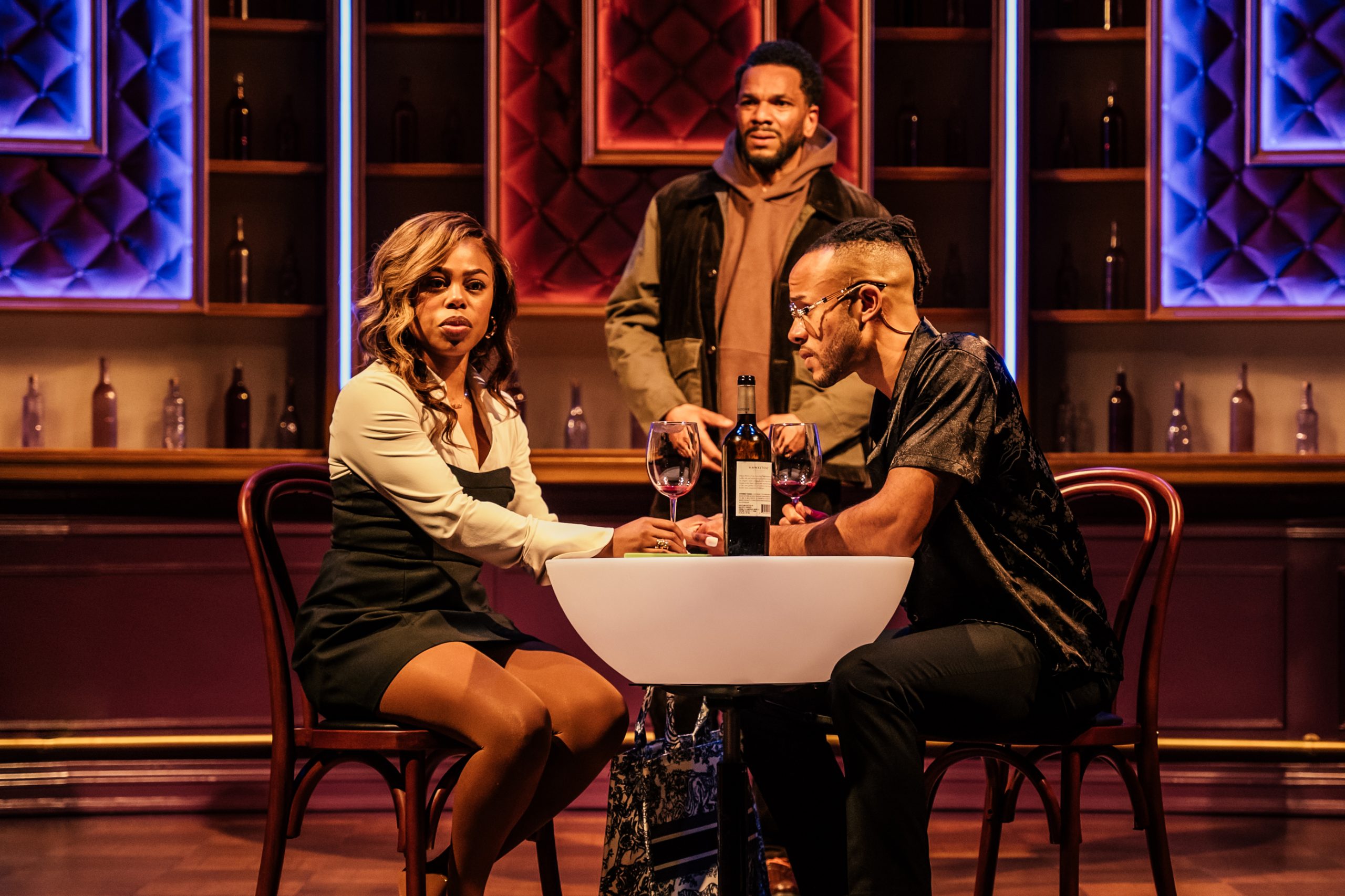
Can we still celebrate the love we have for someone even when the relationship doesn’t pan out? That’s the question at the heart of Douglas Lyons’ hilarious new comedy Table 17, playing at the Geffen Playhouse through Dec 5.
Dallas and Jada meet at a restaurant where they’re seated at the eponymous table two years after their engagement ended to figure out what to do with the feelings they still have for each other.
But there’s more to this meet-up than it first appears, and over the course of their meal, they have to deal with the explosive chemistry between them, the wounds the relationship left them with, and an overbearing queer waiter who gets more entangled with them than anyone would like.
Also, potentially entangled in the show are several audience members. When purchasing tickets, patrons have the option of buying seats at one of five other tables that make up the restaurant set.
Lyons, who’s best known for his GLAAD-award-nominated hit play Chicken & Biscuits, has been making a name for himself with deeply funny plays that tell queer stories, Black stories, and stories about women. His last show in LA was IAMA Theatre’s workshop production of Don’t Touch My Hair.

He says his focus on comedy comes from growing up in a large family where laughter “cut through the drama.”
“I grew up as a preacher’s kid. I learned very early on, because I’m a part of two big families on both sides, that comedy is communication. It was how I was raised,” he says.
“I love giggling. I love being silly. And once I found I had the permission as a writer to create work that made not only me laugh, but my friends laugh and then audiences laugh, I went, why don’t we do more of this?”
Lyons’ work fills a noticeable gap in the theatre scene, which tends to promote heavier dramatic works, and where romantic comedy seems to have mostly disappeared from stage and screen.
“In the 90s and 2000s, rom-com was the sweet spot. But we were hoping to love differently then than we are now. Now you’ve got apps. How we fall in love is different now,” Lyons says. “I mean, in the queer community, Grindr and all these apps and stuff, you’re not meeting people at a bar.”
But Lyons says that Table 17 scratches that itch we have to see love expressed.
“It is in our DNA to desire love, and so when you sit down and you see these two people trying their best to communicate with each other, and you can tell that they love each other, but sometimes they miss each other and they make poor decisions around each other, it’s in some way hopeful,” he says.
“I think traditional rom-coms made it feel like a fairy tale. And in 2025, we know love is not that. I want audiences to be reminded that love is worth exploring and fighting for and pushing.”
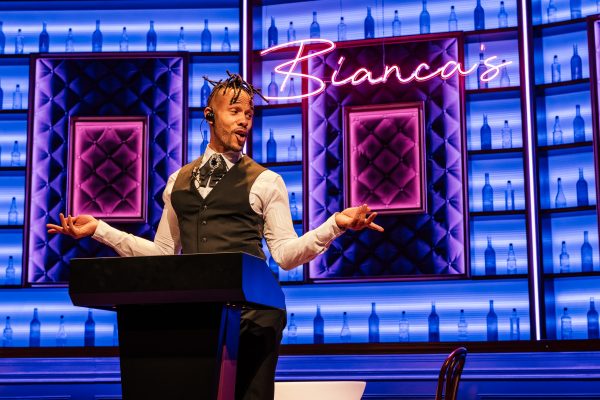
The budding bicoastal playwright says Table 17, fresh from an Off-Broadway run that was deemed a New York Times Critics’ Pick and won two Audelco Awards, is perfect for Los Angeles audiences.
“I say this openly—I think New York takes itself too seriously. I think we sometimes want to be so highbrow in New York that we don’t really engage the community. And what [Geffen artistic director] Tarell [Alvin McCraney] is doing at the Geffen that I’ve witnessed, there are all colors, stripes, genders, ages walking through that door and leaving with smiles. That to me is the kind of theater I want to make,” he says.
Table 17 plays at the Geffen Playhouse, 10886 Le Conte Avenue, Los Angeles, CA 90024, until December 7. Use code: LAB49T17 for $49 (includes per ticket fee) for Premium, Section A or Section B seating. No ticket limit. No refunds or ticket exchanges. Visit geffenplayhouse.org to purchase your tickets. Code also valid for performances Dec.4-7, including weekend matinees.
Join us for Gay Singles Night with Matchmaker Daniel Cooley, with talk-back after the show! The first ten people to email an RSVP to [email protected] can request two free tickets (while supplies last). Otherwise, use code: LAB49T17
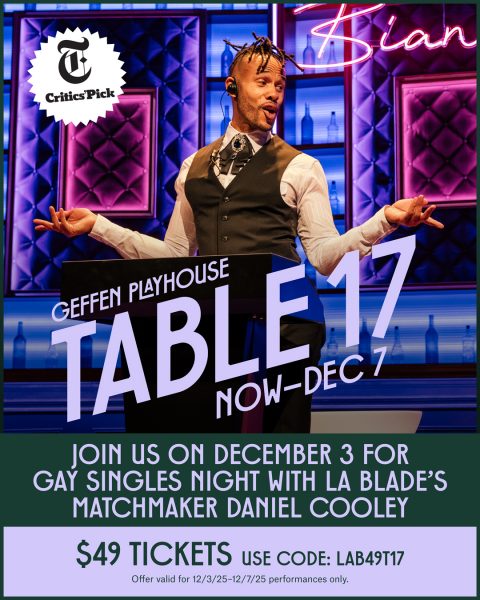
a&e features
The Ultimatum: Queer Love’s “villain” Vanessa Papa is rebuilding comfort in queer spaces
Papa will host the next Lez Brunch on Saturday, Nov. 22nd where the theme is chosen family and friendships.
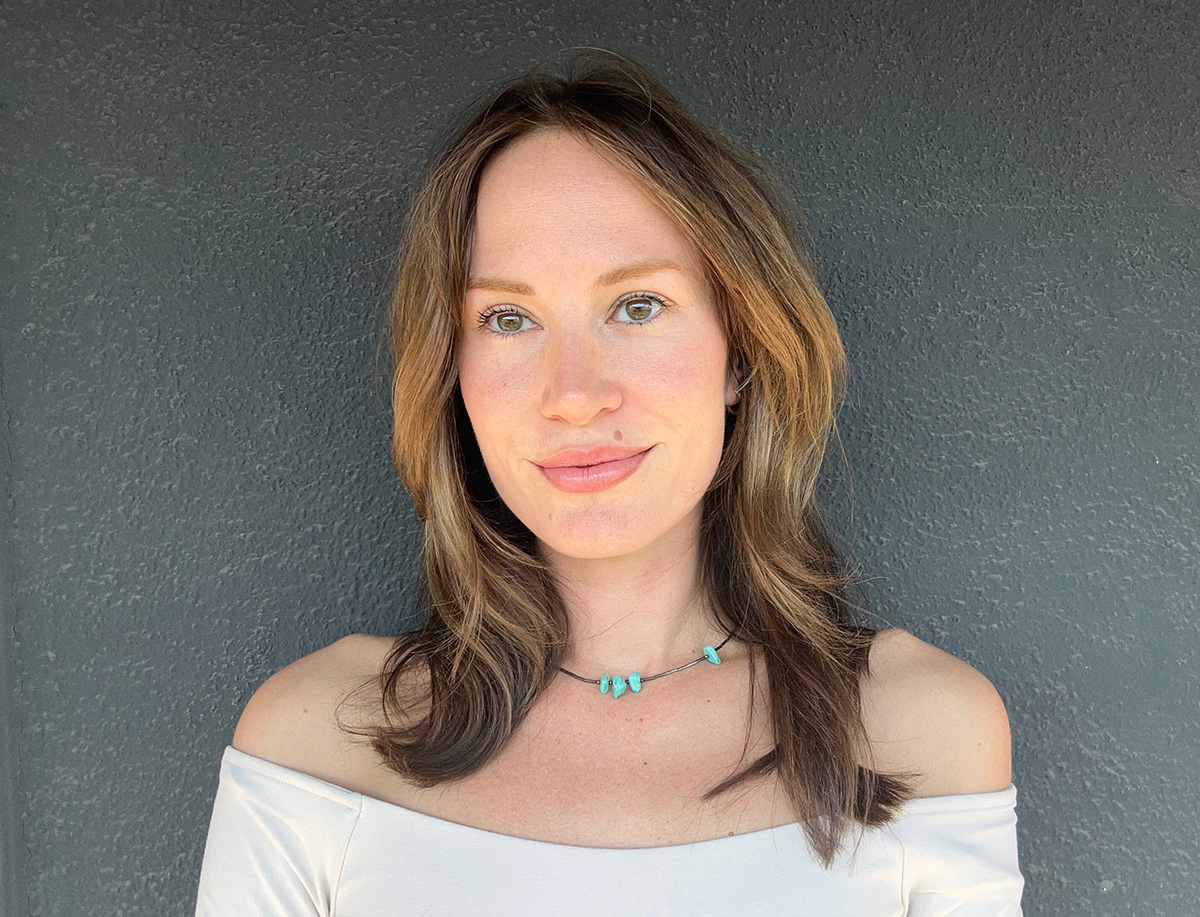
In the spring of 2023, I was finally feeling comfortable identifying as queer. It wasn’t a big revelation so much as a gentle realization that unraveled from a period of intentional time growing my friendships with other queer people.
At that point, I shared a home with a motley of queer artists I cherished: Hanne, Romeo, Oliver, and Ava. We passed snacks to each other from an open kitchen window that led to a patio table where we shared mugs of tea and mini potluck dinners. We read books and talked about old crushes and new ones on the horizon. We made art messily and laughed loudly.
On one rainy night, we cozied up on the couch to watch the sappy sapphic romcom, Imagine Me and You. On another, we projected an episode of The Ultimatum: Queer Love in our living room, gasping and conversing the whole time. I remember scouring internet forums about the show episode after episode, and seeing one of its participants in particular receive consistent waves of backlash from viewers: Vanessa Papa.
Papa was a contentious and oft-discussed character from the series’s eventful run, both in and out of the show. Other participants found her attitude and behavior distasteful and did not shy away from voicing this to her. Viewers lambasted her seemingly flippant attitude towards her partner and the show’s premise. As I prepare to speak with Papa, I keep thinking: what kind of impact does this magnitude of public criticism have on someone’s perception of themself and the world around them? How does she interact with queer spaces today, after being deemed one of the show’s undisputed “villains”?
Papa is the host for the next Lez Brunch this Saturday, where the theme is chosen family and friendships. How has she reclaimed queer acceptance and friendship in her life when she spent the period after the show’s airing hiding, afraid of the “aggression” she was starting to face in her day-to-day life? The Blade sat down with Papa to discuss the impact of being on reality TV as a queer person, how that’s affected how she interacts with queer spaces, and how she approaches maintaining a tight, core chosen family amidst a difficult period of self-doubt that followed the release of the first LGBTQ+ edition of Netflix’s “The Ultimatum.”
Since the show has aired, I’m wondering if the criticism and negativity you received in response still lingers on at all, or if it’s affected the way that you navigate your identity as a queer person?
I think what I encountered very quickly was that the majority of people who were cast were there to put their best foot forward in terms of the public eye. And I didn’t come on like that. I just came on to the show to be my true self, whether I was angry at the time, or sad, or whatever it was. I was just going to be genuinely me. And obviously, when you do something like that, it’s really easy to edit and pick apart the person way more if they’re not putting on a constant mature and happy and calm face, which a lot of them did. I think I understood very early on how I would be edited, but it wasn’t going to change me being me, and it was really hard when the show came out, which was about two years after we filmed.
Basically, my whole life had changed [after] we finished filming, and then before the show came out. I had taken time to travel the world. I got a nose job. I moved to Los Angeles. I was starting a new relationship, and then the show came out, and it was just like: number one, I was in the public eye in a way I’d never been before. And number two, I was so villainized and picked on by the queer community. And number three, I saw things happen in the show that my previous partner had not made me aware of. So it was just a lot of trauma to come on all at once while I was just feeling like I was reestablishing my life without that relationship.
When the show first came out, people were actually aggressive towards me when they would meet me in public. I remember distinctly someone asking me for a picture. They put their arm around me, and while they’re taking the picture, they said, “I fucking hate you.” Moments like that happened constantly for months after the show came out. So I just kind of hid away because people were so cruel. Now, luckily, years later, it’s calmed down.
People tend to have this idea of who I am. It’s really hard to grasp that as the human who went through the experience to have to say: Okay, Vanessa, people who watch the show don’t know what you know, and there’s no way you can fully explain it to them. And you just have to accept that. I used to love being out and open and going to all the queer parties, and then the show came out, and now I have just so much more of a hesitation to be in queer spaces. It’s really upsetting to me, but I’m slowly getting back out there and finding that as the time has progressed, people are softer in terms of thinking they know who I am.
Does that hesitation linger in other aspects of your life and are there certain spaces you just feel more comfortable in now?
I think I feel a lot stronger in just who I am now, so I’m no longer really afraid to go into queer spaces. And if someone were to be unkind to me, I’m just very ready to say, “Okay, I’m gonna walk away now.” I feel like I finally have that bravery, and I’m not just trying to continue to be kind to someone who’s being unkind to me. But in terms of wondering if people are just trying to get to know me or be my friend or get a picture with me because I was in the show, that feeling still lingers. I actually was dating someone for about three years, and that was amazing, and I love her, but we are no longer together.
With that being said, I’m single, and I just have no desire to date, because I cannot imagine going out into the queer world in LA and meeting someone and having in the back of my mind: are they really only on this date because they saw me on the show, or do they think I’m the person from the show? Because the way I was put out there is not really me. I have so much hesitation to get to know someone intimately [since] the show came out, and that’s only something I’ve had to really think about the past few months after my breakup.
I had this person who knew me before the show came out. She obviously wasn’t dating me because I was on a reality show. She had no idea when we started to date. And I look back and I’m like: wow, I got really lucky with that, but I’ll never have that again. Now, I’ll always probably have in the back of my mind: Do you want to date me, actually? Or do you want to date the person whom you saw on the show? Because you can say, “I’m dating the villain from the Queer Ultimatum.”
Did you watch the show with the person you dated after filming had long wrapped? Were you hesitant or anxious to be like: I don’t know how this person I love is going to see me depicted on TV — this almost disembodied version of you?
When I started to date my ex, I had to tell her: I’m going to be on a reality show with my ex. What a terrible thing to tell someone that you’re falling in love with. Number one, I’m going to be a public figure. And number two, you’re gonna have to watch a TV show of me making out with my ex. Crazy. She ended up watching it on her own, so I didn’t get to have the experience with her that I wanted to.
What I can say is, with my family and my friends and people who know me, when they watch the show: they see me. No matter how edited it is and spliced together, they know me. They know my humor. They know my reactions. They know everything. So they are all able to watch it and just laugh at it. But that’s clearly not how the public perceived it.
It was probably very hard for her to watch it, but I think she knew who I was at that point. We had been together for over a year.
It was hard for her to watch it. Was it hard for you to watch it?
Oh, my god, yes. I kept a diary every single day that we were there, because I didn’t want my own reality to get messed up. I would write down who I talked to, what our conversations were. So watching the show, I wanted to scream. “This is not what we were talking about. This is not what happened!” But then I just realized that’s what I signed up for, and I had no real perception of [being on] reality TV before, and I just had to accept it.
I watched the show with two of my best friends, Jordan and Kim, and it was just crazy how often I was pausing it and saying, “Okay, so this is what really happened,” and giving them the rundown. In that moment, I was like, “What the fuck is this?” But then also had to accept there’s no way to change it. I just knew that’s what it was, and I needed to accept it. Whatever you say to add to the conversation, whether you think you’re clarifying something, if they don’t like you and they’re dead set on disliking you, they will use any more information to just compile it somehow.
So I just stayed quiet and didn’t defend myself when my other cast members were coming out and making TikToks about me. People that I love, people I had no beef with, were still leaning into the villainhood of me because it made their social media blow up. And I just stayed silent because I knew there was nothing that I could do at that point to change people’s minds. Because they love a villain, and they had a villain in me.
Do you regret the experience?
It was the worst time of my life. I truly mean that [and] I hope that that remains the worst part of my life. I don’t regret it, because that was the reason that that relationship ended for me, and I genuinely don’t think it ever would have ended without that. That was something that I never would have had the strength to do. It was good for me in that way, but the experience was really a low point. I’m happy it’s in the past.
In this current period of time in your life, what’s keeping you passionate and happy? With the upcoming Lez Brunch theme being chosen family and friendships, how are you leaning into those relationships now?
The past few months are my first months being single, and so I’ve had a lot of time to spend with my friends — which has been so nice. I’ve missed relying on my friends for social situations, because I used to rely so heavily on my partner. It’s been really nice to have free time all the time. When my friends ask me to hang out, I can almost always say yes. And I’ve been doing a lot of reading. I’ve been painting little canvases that I’m going to put on my walls to decorate my apartment. I’ve been doing a lot of karaoke nights.
I’ve been really focusing on acting and honing in on that craft and really applying to projects and finding a new manager and just really setting myself up for success in the acting world. I just want to keep that momentum going. I’m really happy with where I am right now with that.
[With] Lez Brunch, I think there is such a different atmosphere surrounding that, because it’s not: come out late at night when you’re drunk and let’s party — which is pretty much all of the events other than Lez Brunch that I go to or host. It’s more of a hangout experience versus a nighttime event.
[When it comes to chosen family] I have so much empathy for people who are just trying to love the way they want to love, and because of that, they’ve experienced rejection by people who used to love them until they knew this one thing about them. It’s not a bad thing. It’s not a dangerous thing. It’s simply: I might love someone of the same gender.
So I love situations in queer communities where we’re boldly saying: If you can’t have your blood family, you can have your chosen family. We’re all here to support you and make you feel loved. And I feel like that’s what the theme of this Lez Brunch is. We are your chosen family. So come hang out and celebrate, and let’s all outpour love on each other.
Come join The Blade and Vanessa at Lez Brunch:
📅 Saturday, November 22 · 12PM–4PM (or as late as we want!)
📍 Blue Birdy
8917 Sunset Blvd, West Hollywood, CA 90069
Next to the world-famous Whisky A Go Go on the Sunset Strip
-
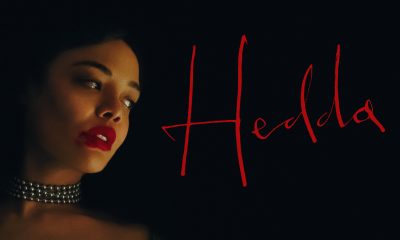
 a&e features3 days ago
a&e features3 days agoNia DaCosta and Tessa Thompson on the vital queer chaos of ‘Hedda’
-
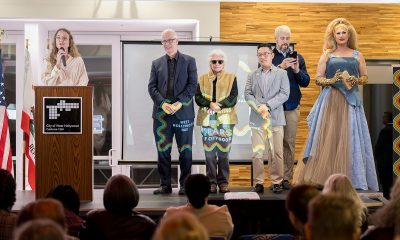
 West Hollywood3 days ago
West Hollywood3 days agoToday, West Hollywood celebrates 41 years of queer cityhood
-

 a&e features2 days ago
a&e features2 days agoJonathan Bennett: making ‘Finding Mr. Christmas’ Season 2 with heart, and telling gay love stories for broad audiences
-
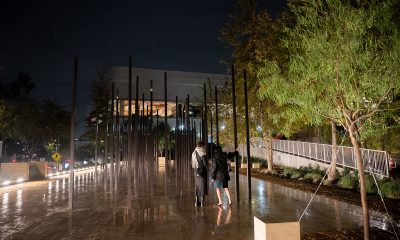
 West Hollywood1 day ago
West Hollywood1 day agoWest Hollywood kicks off community-focused programming for World AIDS Day
-
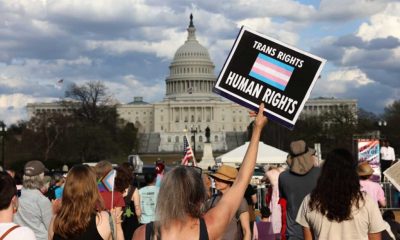
 Transgender4 days ago
Transgender4 days agoChristopher Street Project closed Trans Awareness Week with one of its strongest digital campaigns to date
-
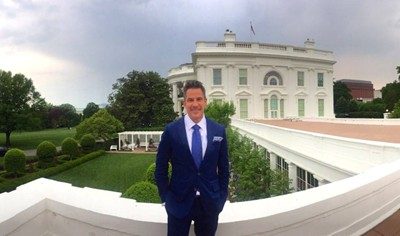
 Features4 days ago
Features4 days agoTrump’s shocking White House East Wing amputation — and the painful fallout Americans won’t ignore
-

 Features3 days ago
Features3 days agoWhere craft meets community: Inside Zion Liu’s and Christian Leon’s small biz ‘Here & Always’
-
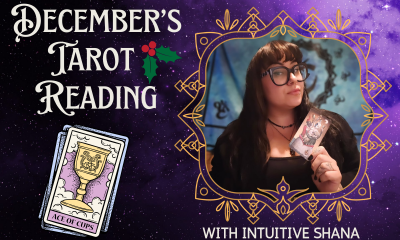
 Tarot Readings and Astrology2 days ago
Tarot Readings and Astrology2 days agoDecember is a time for reflection, celebration, and tying up loose karmic threads in Intuitive Shana’s December tarot reading
-
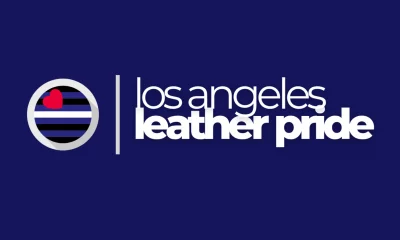
 Leather community2 days ago
Leather community2 days agoLeather, legacy, and a little lust: Celebrating 25 years of LA Leather Pride
-

 National11 hours ago
National11 hours agoFaith leaders denounce anti-transgender attacks

